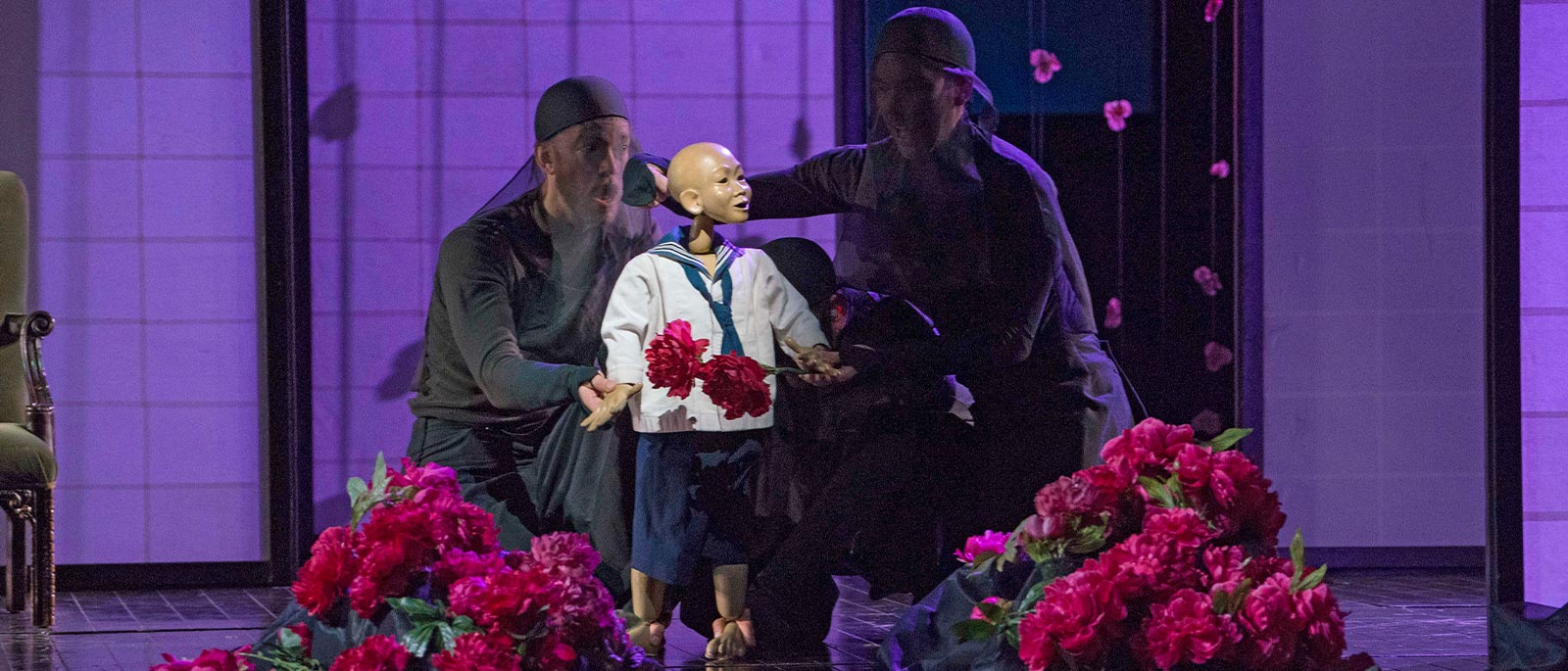
What Is Bunraku Puppetry?
By Charles Sheek
Western audiences are accustomed to seeing puppets used in the spirit of provocative comedy (à la Charlie McCarthy or Punch and Judy) or as homespun, educational entertainment for children (Pinocchio, the Muppets). The puppets featured in the Met’s Madama Butterfly, on the other hand, have been inspired by Japanese Bunraku puppetry, a serious and sophisticated theatrical art form born in 17th-century Osaka. Most traditional Bunraku plays feature historical storylines and address the common Japanese theme of conflict between social obligation and human emotion. Puppeteers go through lengthy apprenticeships to master the form, which could account for the gradual waning of its popularity. There are still a number of practitioners today in Japan, however, and in the West, Mark Down and Nick Barnes, the founders of Blind Summit Theatre, also take inspiration from this tradition for their puppet-theater presentations. For Anthony Minghella’s staging of Butterfly, they created Bunraku-style puppets to represent Cio-Cio-San’s child and, in a dream sequence, Butterfly herself. Generally one-half to two-thirds life size, a Bunraku puppet has no strings and is operated by three highly trained puppeteers, each responsible for a different body part and discreetly visible to the audience.